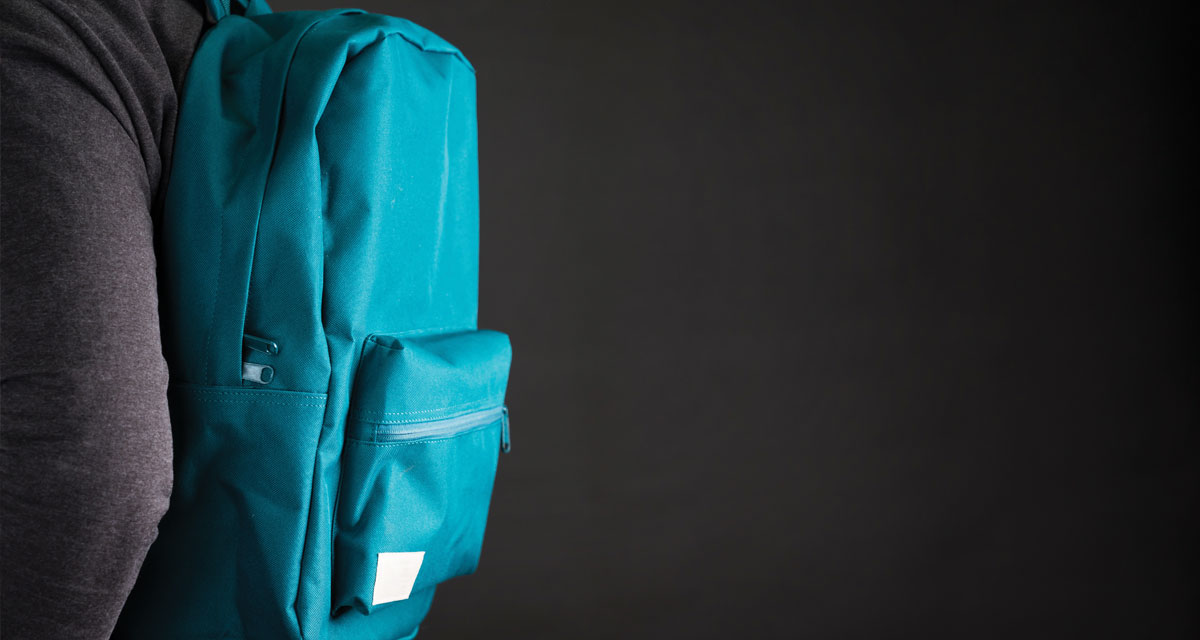BY JAMIE LOBER
The American Occupational Therapy Association reports that more than 79 million students in the United States carry a backpack, and an estimated 55 percent of them are carrying one that is too heavy. Backpack safety is an issue that should be taken seriously. Some kids may have a hard time picking up their backpack, and others may complain of pain or discomfort from this needed accessory. If you lift your child’s backpack, and it feels like he or she is carrying a load of rocks, it is time to take action. If the extra weight and pain your child may be enduring are raising red flags in your mind, you are correct. The National Safety Council said that backpacks that are too heavy can cause back, neck and shoulder pain, as well as poor posture. The American Chiropractic Association said that backpacks should never weigh more than 5 to 10 percent of the child’s own weight. This means if your child is 80 pounds, the backpack should weigh no more than 8 to 12 pounds.
As you shop this fall to find the most comfortable and fashionable backpack for your child, keep in mind that bigger is not always better. Sometimes having more room means that your child will be more likely to pack more, and in turn, make the backpack heavier. The National Safety Council recommends that the backpack have certain features, including:
- A width wider than the child’s torso, and a length no more than 4 inches below the waist;
- Padded, adjustable shoulder straps to distribute weight;
- Padded back to prevent contents from poking;
- Chest and waist straps to distribute weight evenly;
- Multiple compartments to position weight effectively;
- Compression straps;
- Reflective material so kids can be seen when walking.
Take the time to pack with your child. While the backpack may have a lot of space, you do not need to fill it completely. It is important to carry only what is necessary and leave other things at home or in the locker. There are also some strategies for both packing and wearing the backpack, like:
- Pack heaviest items first, closest to the bottom;
- Use the compartments to lighten the load;
- Use both straps when carrying;
- Tighten shoulder straps to fit the back, so it doesn’t dangle;
- Use chest, waist and compression straps and adjust them, so weight is distributed evenly.
Get to know your child’s backpack. Pick it up occasionally and see just how much he or she is carrying. The American Academy of Orthopedic Surgeons said that if the backpack seems too heavy, you can have your child remove some books and carry them in his or her arms to ease the weight on the back. If it is offered, you may want to purchase a second set of textbooks to have at home, as well, to make things lighter.
Some experts advocate a backpack on wheels, though the American Chiropractic Association says it replaces the back injury hazard with a tripping hazard. You want to take the time to show your child how to lift properly. Just as if you are lifting anything else that is heavy, you should bend at the knees and grab it with both hands when lifting it to the shoulders. If your child is experiencing pain and discomfort from the backpack, it may be a good idea to see the pediatrician or a physical or occupational therapist to find out the treatment options. A chiropractor can also help weigh in on tips for strengthening muscles and having good nutrition, posture, and sleeping habits. When you are armed with these strategies, you will kick off the school year with ease.






















